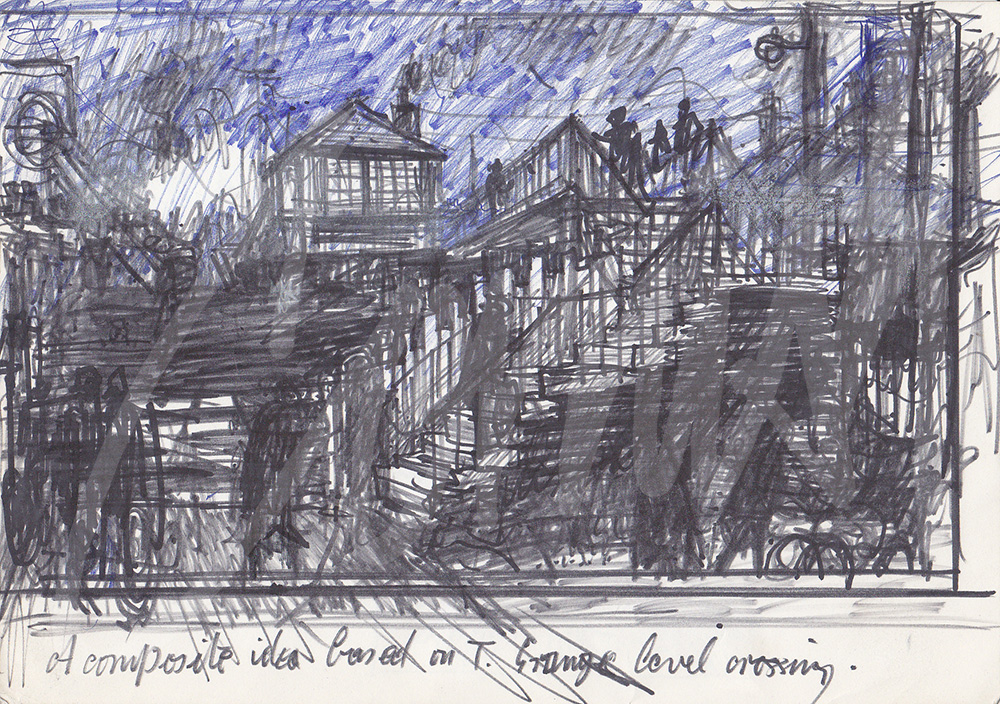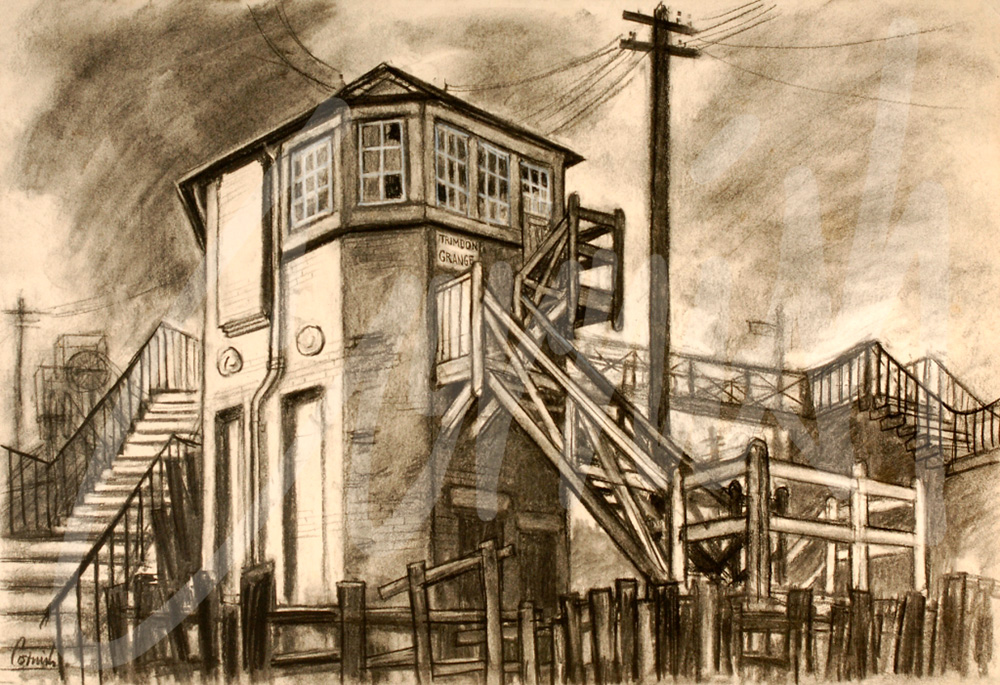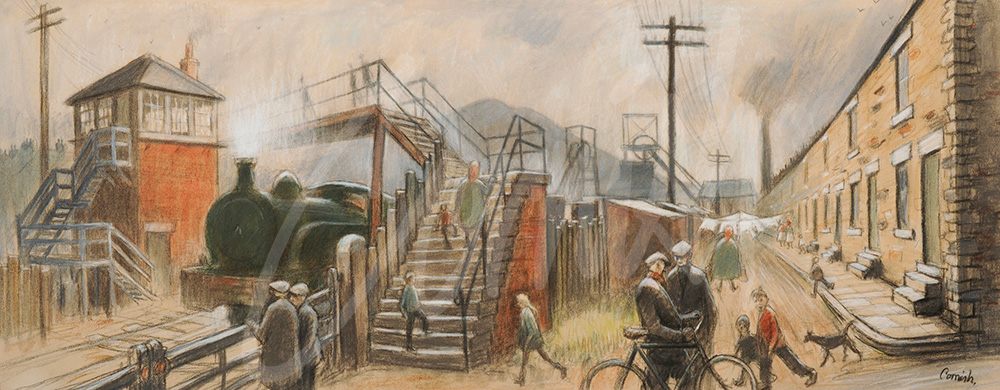
Latest News

The Trimdon Level Crossing
Cornish’s evocative paintings and drawings provide an unrivalled social record, chronicling an important era in English history. His work is part of a deeper and more complex unravelling and re-evaluation of history.
His observations of people and places are a window into a world which no longer exists, but which he has immortalised for us all in moments captured in drawings and paintings. His journey, from former miner to professional artist, is a story of determination and resilience to overcome hardship and prejudice. Working class painters were deemed to be ‘Sunday painters’ and there was an assumption of naivety of such artists by the Arts establishment because of their occupation, as well as implied political associations. Cornish was unable to attend The Slade School of Art in London because he was in a reserved occupation in 1939. There are examples of prejudice and resentment from some of his contemporaries because he lacked an academic background. Cornish was the victim of an unfortunate example of prejudice during the 1940s which was to eventually lead to a positive outcome.
Cornish met Sarah Bartley in 1944 at a dance at the Clarence Ballroom in Spennymoor.. The courtship lasted for two years until they were married at Rose Street Methodist Chapel in Trimdon. Sarah Lived in Trimdon and was a nurse during the war years and also an accomplished pianist. Trimdon was 8 miles from Spennymoor and Cornish would spend some time at the family home with Sarah and her 3 brothers and 3 sisters. Her father was a former miner and her grandfather was a founder member of the Blackhall Colliery band.
Coal mines in every town and village had connecting railway lines to transport the coal to coastal ports such as Tyne Dock. Level crossings, which still exist today on some railway lines, were a feature in many parts of the county. Whenever a locomotive hauling dozens of coal trucks was on the move the level crossing gates would close to traffic to enable safe movement. Cornish travelled to Trimdon from Spennymoor on the TMS (Trimdon Motor Services) and on many occasions the bus would have to stop at the Trimdon Grange level crossing and, waiting patiently, Cornish would take out his sketchbook and pen to capture this moment in time. The scene showing the level crossing, steam train, terraced houses and folks going about their daily lives is typical of scenes throughout County Durham in this particular slice of life.
Prior to meeting Sarah Bartley, Cornish had been engaged to a different young lady. He was rejected by her family because he was a miner.




